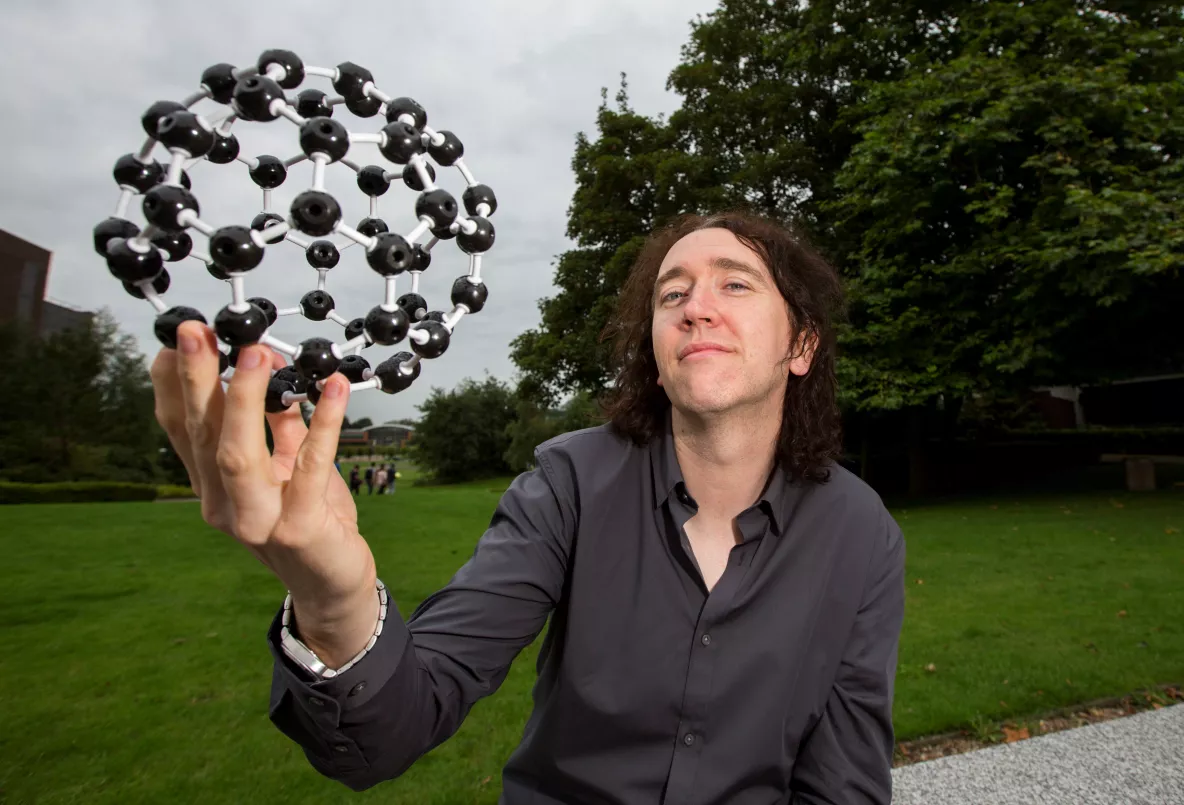
An international team of scientists including researchers at University of Limerick have discovered a new molecule which could further increase ultra-fast decision making in computers.
The energy saving discovery, creating a new type of computing architecture, could have major implications in areas spanning from financial decision-making to bioinformatics.
The team at UL’s Bernal Institute discovered that a simple molecule made from just 77 atoms provides a new fundamental electronic circuit element in which complex logic is encoded in nanoscale material properties.
The new type of brain-inspired computing architecture was created by optimising the electrical properties of soft crystals grown from the molecules.
The finding has just been reported in the world-leading journal Nature.
Damien Thompson, Professor in Physics at UL who leads a research team in predictive materials design at the Bernal Institute, made the discovery using state of the art computer simulations performed on the Irish Centre for High-End Computing supercomputer.
He showed that the molecule uses natural asymmetry in its metal-organic bonds to cleanly switch between different states, which allows it to perform ultra-fast decision-making.
“In the new device, everything is done in one place, so there is no need to keep reading or moving information around,” explained the Science Foundation Ireland-supported scientist.
“This removes the ‘von Neumann bottleneck’, a problem that has plagued computing from the very beginning and still hampers technology development. The new molecular circuitry means the computer-processing unit no longer has to fetch data for every operation it performs, and this saves enormously on time and energy costs.
“We are excited about the possibilities because the devices show all the hallmarks of brain computing. First, a huge number of tiny, identical molecular processors are networked together and work in parallel. More importantly, they show both redundancy and reconfigurability, which means the device can solve problems even if the individual components do not all work perfectly all the time or in the exact same way every time.
“The new circuit elements could provide computers that are smaller, faster, and more energy efficient, exactly what is needed for edge computing, internet of things and artificial intelligence applications,” Professor Thompson added.
The metal-organic molecules were synthesised by collaborators at the Indian Association for the Cultivation of Science (IACS) in Kolkata, made into films at National University of Singapore and tested as circuit elements in Singapore, at Hewlett Packard’s AI Research Lab in Colorado and at Texas A&M University.
Professor Luuk van der Wielen, Director of Bernal Institute and Bernal Professor of Biosystems Engineering and Design, expressed his delight at the major breakthrough involving the UL scientists.
“This high impact research reinforces the ambition of the Bernal Institute at UL to impact the world on the basis of top science in an increasingly international context. This is a continuation of Bernal scientists’ world-leading contribution to the field of predictive materials modelling,” he explained.
Professor Seán Arkins, Dean of Science and Engineering at UL, said: “The researchers in UL’s Department of Physics continue to pioneer the exploitation of organic materials for electrical applications, and this work places them at the forefront of molecular nanotechnology.”
The paper, Decision Trees within a Molecular Memristor, by Sreetosh Goswami, Rajib Pramanick, Abhijeet Patra, Santi Prasad Rath, Martin Foltin, Ariando Ariando, Damien Thompson, T. Venkatesan, Sreebrata Goswami and R. Stanley Williams is published in Nature and is available here: https://www.nature.com/articles/s41586-021-03748-0.